#witchcraft correspondences
Explore tagged Tumblr posts
Text

coffee magic ☕️
a list of simple tips and correspondences for coffee magic
— sun water | energy, happiness
— new moon water | new beginnings, new projects
— full moon water | manifesting, calming
— cinnamon | love, happiness, money
— honey | friendships, relationships, protection
— sugar | manifesting, attraction
— nutmeg | legal matters, good luck
— clove | protection, clarity, abundance
— cardamom | love, lust, confidence, beauty
— anise | purification, protection, love
— ginger | quicken manifestations
— cocoa | grounding, prosperity
— vanilla | calming, good luck, love
— hazelnut | protection, fertility, wisdom
— milk I growth, fertility, strength
— oat milk | prosperity, abundance, fertility
— almond milk | love, prosperity, wisdom
— coconut milk | cleansing, protection, blessing
— stir clockwise | to manifest
— stir counterclockwise | to banish
— paint sigils on your coffee mug / glass
— read your coffee grounds / cream clouds
— scry using black coffee as a reflective surface
#witch#witchblr#witchcraft#grimoire#digital grimoire#coffee magic#coffee magick#grimoire entry#kitchen witch#kitchen witchcraft#cottage witch#hearth witch#eclectic witchcraft#witch community#correspondences#magical correspondences#witchcraft correspondences#witch tips#divination#coffee divination#coffee spell#folk magic#pagan#wiccan#witch aesthetic#kitchen witchery#baby witch#pagan witch#witches#celtic pagan
1K notes
·
View notes
Text
Powerful Ostara Correspondences: Exploring the Herbs, Crystals, and Colours
The arrival of Ostara, celebrated at the spring equinox, is a time of balance, renewal, and blossoming energy. This pivotal moment on the Pagan Wheel of the Year invites us to connect deeply with nature and embrace its vibrant rebirth. Ostara’s energies are beautifully embodied in specific herbs, crystals, and colours, each carrying symbolic and magical significance. In this guide, we’ll explore…
1 note
·
View note
Text
Witch tip: Be sure to distinguish which correspondences are social constructs (for example, associating roses with romance), and which are informed by nature (for example, associating the color red with life, because blood).
This isn't to say that social construct correspondences are bad or lesser - they aren't! But distinguishing between the two helps you develop a better sense of what you can play around with, and how.
1K notes
·
View notes
Text
𝐎𝐬𝐭𝐚𝐫𝐚
⠂⠄⠄⠂⠁⠁⠂⠄⠄⠂⠁⠁⠂⠄⠄⠂⠄⠄⠂⠂⠄⠄⠂⠁⠁⠂⠄⠄⠂⠁⠁
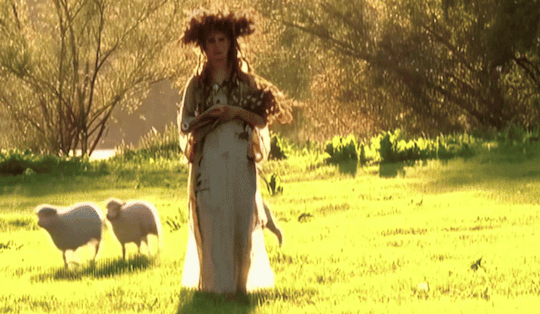
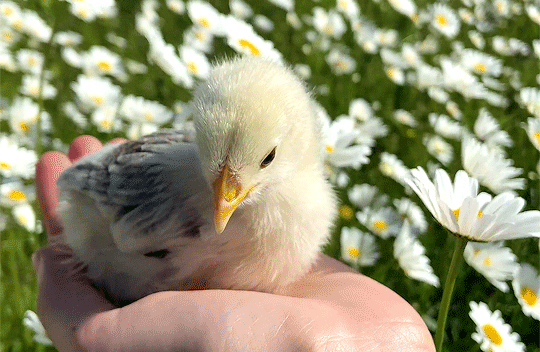
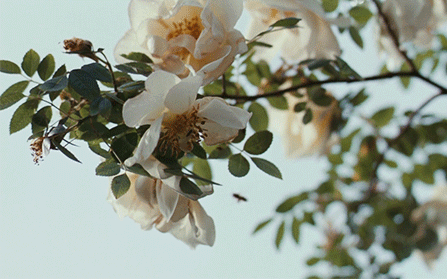
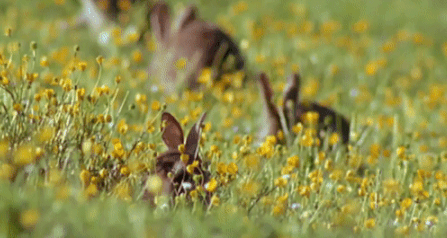
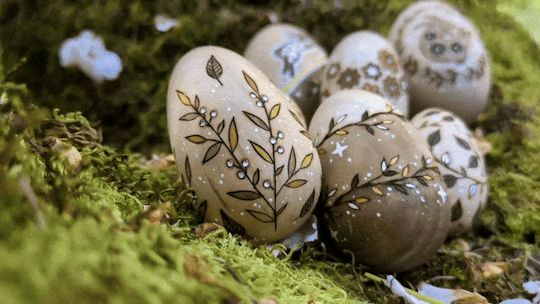

⠂⠄⠄⠂⠁⠁⠂⠄⠄⠂⠁⠁⠂⠄⠄⠂⠄⠄⠂⠂⠄⠄⠂⠁⠁⠂⠄⠄⠂⠁⠁
What is Ostara?
Ostara is a lesser sabbat that marks the official arrival of spring and takes place on the spring equinox, around March 20-21 in the Northern Hemisphere and September 20-23 in the Southern Hemisphere. It’s the moment when day and night are of equal length, symbolizing balance before the days begin to grow longer and light overcomes darkness. This is a time of renewal, fertility, and new beginnings, making it perfect for fresh starts and setting intentions for the season ahead.
⠂⠄⠄⠂⠁⠁⠂⠄⠄⠂⠁⠁⠂⠄⠄⠂⠄⠄⠂⠂⠄⠄⠂⠁⠁⠂⠄⠄⠂⠁⠁
The Legend of Ostara
According to a legend, Ostara is celebrated in honor of the Germanic goddess of the dawn and spring. The story goes that she once found a bird injured by the cold of winter. To save it, she transformed it into a hare, but the hare retained its ability to lay eggs. As a sign of gratitude, the hare painted and gifted eggs to the goddess, which is why eggs remain a central symbol of Ostara today. (1883, H. Krebs)
⠂⠄⠄⠂⠁⠁⠂⠄⠄⠂⠁⠁⠂⠄⠄⠂⠄⠄⠂⠂⠄⠄⠂⠁⠁⠂⠄⠄⠂⠁⠁
Goddess Eostre
Eostre, also known as Ostara, is the Germanic goddess of spring, fertility, and renewal. Her name is linked to the word "east" and the rising dawn, and some believe it means "Radiant Dawn." Eostre represents the spirit of spring and the return of fertility to the earth. Her arrival was traditionally celebrated with flowers, singing, bell ringing, and the lighting of new fires at dawn. She is often described as a beautiful young woman with flowers woven into her hair, accompanied by her consort and also her sacred animal, a hare. Sometimes he appears as a full-grown man, other times as a small rabbit cradled in her arms. Together, they bring eggs, a powerful symbol of the earth’s rebirth and fertility.
There isn’t much information about Eostre, but she is mentioned in the writings of an 8th-century monk, Venerable Bede. He recorded that the pagan Anglo-Saxons of medieval Northumbria held festivals in her honor during the month of April. Other than this, we don’t know much about how she was worshiped in ancient times. However, by the 19th century, she had become an important figure in German folklore, appearing in literature, paintings, and stories. She is often depicted as a youthful maiden adorned with flowers, symbolizing nature’s renewal after winter.
Some ancient festivals are said to have honored her with offerings of flowers, eggs, and feasts, welcoming the warmth and life she brings. Venerable Bede documented these traditions around the year 700 CE while traveling through Europe, recording pagan customs for the Catholic Church. The Church later attempted to shift the focus from Eostre to the resurrection of Jesus, but many ancient traditions remained deeply rooted. Eventually, instead of trying to erase them, the Church adapted and merged the two celebrations, renaming their spring festival “Easter” as a way to unite both traditions.
⠂⠄⠄⠂⠁⠁⠂⠄⠄⠂⠁⠁⠂⠄⠄⠂⠄⠄⠂⠂⠄⠄⠂⠁⠁⠂⠄⠄⠂⠁⠁
The Symbolism of The Painted Eggs
Eggs have long been a symbol of fertility, renewal, and the emergence of new life. Many cultures have used painted eggs in their spring festivals, from ancient Egyptians and Persians to European pagans. In the context of Ostara, eggs represent the potential for new beginnings and the fertility of the land as it awakens from winter. Decorating eggs is a tradition that has continued for centuries, carrying the magic of transformation and the blessings of abundance for the coming season.
⠂⠄⠄⠂⠁⠁⠂⠄⠄⠂⠁⠁⠂⠄⠄⠂⠄⠄⠂⠂⠄⠄⠂⠁⠁⠂⠄⠄⠂⠁⠁
Magic Correspondences
Planets: Mars
Season: Spring
Element: Air
Time of the Day: Dawn, Early Morning
Tarot: The High Priestess, The Emperor, Sevend of Wands, Justice
Colors: All pastel colors, yellow, green, pink, blue, brown
Herbs: Sorrel, Mint, Rosemary, Ginger, Irish Moss, Tansy, Woodruff, Wood Betony, Star Anise, Catnip
Fruits: Strawberries, Tangerine, Bananas, Lemon, Grapefruit, Apple, Orange, Mulberries, Kiwi
Vegetables: Artichokes, Asparagus, Carrots, Spring Onions, Garlic, Wild Nettles, Mushrooms
Crystals: Aquamarine, Jasper, Amethyst, Rose Quartz, Green Aventurine, Moonstone. Amazonite
Runes: Teiwaz, Ehwaz, Berkana
Trees: Birch, Rowan, Dogwood, Ash, Alder
Godesses: Eostre, Freyja, Aphrodite, Isis, Hecate, Demeter, Gaia, Athena, Astarte, Minerva, Cybele, The Morrigan
Gods: Mars, Ares, Apollo, Pan, Cernunnos, Tyr, Odin, Osiris, Dagda, Adonis
Dragon: Grael, Sairys
Flowers: Daffodil, Hyacinth, Daisy, Tulips, Clover, Crocus, Violet, Rose, Jasmine, Lilac, Honeysuckle
Animals: Hare, Rabbit, Chicks, Lamb, Butterfly, Robin, Bee, Snake. Deer, Wolf
Magical Powers: Balance, Renewal, Action, New Beginnings, Hope, New Possibilities, Fertility, Rebirth
Symbols: Rabbits, Eggs, Flowers, Bees, Birds and Nests, Butterflies, Flower Crowns, Seeds
⠂⠄⠄⠂⠁⠁⠂⠄⠄⠂⠁⠁⠂⠄⠄⠂⠄⠄⠂⠂⠄⠄⠂⠁⠁⠂⠄⠄⠂⠁⠁
Activities to do:
🐰 Decorate your space with Ostara symbols like eggs, bunnies, baby chicks etc.
🐣 Start planting seeds in your garden.
🐰 Buy or pick fresh flowers and place them in your home.
🐣 Paint some eggs. Use simple colors or add sigils, runes, symbols or anything you want to attract.
🐰 If you have a farm or a garden, it's the perfect time to buy and raise baby chicks! <3
🐣 Enjoy a festive meal to celebrate both Ostara and Spring Equinox.
🐰 Do some painting or other creative activities.
🐣 Do a deep spring cleaning, you rearrange your furniture for a fresh start.
🐰 Clean up your garden.
🐣 Leave seeds in your garden for birds.
🐰 Spend time in nature and look for the first signs of spring.
🐣 Make a list of goals to accomplish before spring ends.
🐰 Burn some incense to cleanse your space.
🐣 Make special Ostara candles with seasonal colors or herbs.
🐰 Do a tarot, rune, or pendulum reading in the morning of Ostara.
🐣 Try an Ostara guided meditation to connect with the celebration.
🐰 Honor Goddess Eostre with offerings or prayers.
🐣 Make an Ostara magickal jar
🐰 Wear clothing or jewelry in Ostara colors.
🐣 Try new recipes, especially with eggs and carrots.
🐰 Drink some tea and relax.
🐣 Read about Ostara and its traditions.
🐰 Make a flower crown for yourself or a loved one.
🐣 Try colorful makeup inspired by spring.
🐰 Dye eggs naturally or try flower prints on them.
🐣 Make friendship bracelets and share them with your loved ones.
🐰 Spend time with animals and connect with their energy.
🐣 Host an Ostara picnic or dinner with friends or family.
🐰 Plant your dream garden or buy new flower seeds.
🐣 Try aromatherapy with fresh scents (spring flowers).
🐰 Plan an egg hunt for fun with friends or family.
🐣 Connect with deities associated with Ostara and spring.
🐰 Worship your deities and honor Goddess Eostre.
🐣 Paint your nails in pastel colors.
🐰 Decorate your altar with Ostara symbols and colorful ribbons.
🐣 Try new activities, change routines, and care for yourself!
⠂⠄⠄⠂⠁⠁⠂⠄⠄⠂⠁⠁⠂⠄⠄⠂⠄⠄⠂⠂⠄⠄⠂⠁⠁⠂⠄⠄⠂⠁⠁
Food and Drinks:
Anything that has eggs! omelet, deviled eggs, stuffed eggs, carrot cake, braided bread, honey pastries, lamb, ham, fish, green vegetables, asparagus, goat cheese, sheep cheese, cow milk cheese, goat milk, sheep milk, cow milk, seasonal fruits, orange juice, tangerine juice, homemade carrot juice, dishes garnished with parsley, sweet egg tarts, muffins, carrot muffins, waffles, hot cross buns, herbal tea, mint, salads garnished with edible flowers, lemon, lemon bread, violet flower cake, lavender cake, brownies, preserves from last season, apples, yogurt, mozzarella, chocolate cake.
⠂⠄⠄⠂⠁⠁⠂⠄⠄⠂⠁⠁⠂⠄⠄⠂⠄⠄⠂⠂⠄⠄⠂⠁⠁⠂⠄⠄⠂⠁⠁
useful sources: Wicca: A Modern Guide To Witchcraft & Magick; Encyclopedia of Witchcraft: The Complete A-Z for the Entire Magical World by Judika Illes
gifs credit: Pinterest
tips♡🐇🌼
#ostara#spring equinox#spring#magic#magick#deity work#paganism#deity worship#hellenic polytheism#witch#witchblr#witchcraft#hellenic pagan#wicca#sabbath#eostre#easter#pagan witch#baby witch#pagan#paganblr#witchy#greek mythology#witches of tumblr#witchcore#witches#magic correspondences#pagans#witch community#tarot
799 notes
·
View notes
Text
Different flowers and the Hellenic deities they correspond with: a masterlist:
🌸🏛️🌸🏛️🌸🏛️🌸🏛️🌸🏛️🌸🏛️🌸🏛️🌸🏛️
- Anenome 🌹Aeolus, Aether
- Aster 🌹 Astraea
- Amaranth 🌹Artemis
- Allium 🌹Poseidon, Hecate
- Asphodel 🌹hades, Nyx, Persephone, Hecate
- Bluebell 🌹Circe
- Buttercup 🌹Apollo
- Black eyed Susan 🌹Tyche, Nemesis
- Bleeding heart 🌹Aphrodite
- Chrysanthemum 🌹 Heracles,
- Carnation 🌹Artemis, Aphrodite, Ares, Dysnomia, Zeus
- Cornflower 🌹Demeter
- Crocus 🌹Apollo, Hermes
- Cosmos 🌹Astraeus
- Cyclamen 🌹Persephone, Hekate
- Dandelion 🌹Apollo, Hekate
- Daisy 🌹Hebe, Hephaestus, Artemis, Persephone, Aphrodite
- Daffodil 🌹 Apollo, Eirene, Proteus, Hades
- Delphinium 🌹Poseidon, Amphitrite, Britomartis
- Daylily 🌹 Hyperion, Aether
- Forget me not 🌹 Mnemosyne, Dionysus, Zeus
- Foxglove 🌹 Artemis, Ares
- Gardenia 🌹Athena, Aphrodite
- Geranium 🌹Circe, Aphrodite
- Gladiolus 🌹 Apollo, Nike
- Goldenrod 🌹Demeter
- Heather 🌹 Heracles, Hera
- Heliotrope 🌹 Helios
- Hollyhock 🌹Hestia
- Hyacinth 🌹 Apollo
- Honeysuckle 🌹 Aristaeus, Hestia
- Iris 🌹 Iris, Pistis
- Jasmine 🌹Aphrodite, Athena, Morpheus, Nyx
- Lily 🌹Hebe, Hekate, Hera
- Lily of the valley 🌹 Persephone, Melinoe, Prometheus, Hades, Hekate, Nyx
- Lavender 🌹 Asclepius
- Lilac 🌹Pan
- Morning glory 🌹 Apollo, Eos
- Marigold 🌹 Apollo, Deipneus, Dionysus
- Nasturtium 🌹Hephaestus, Nike
- Orchid 🌹 Dionysus
- Peace Lily 🌹Tyche, Harmonia, Hera
- Poppy 🌹Ares, Asclepius, Epione, Morpheus, Hygeia, Demeter
- Peony 🌹 Aphrodite, Apollo
- Pansy 🌹Apollo, Dionysus
- Phlox 🌹 Eros
- Rose 🌹Aglaea, Aphrodite, Clymene, Eris, Eos
- Sunflower 🌹 Demeter, Apollo
- Sweet pea 🌹Aphrodite
- Snowdrops 🌹Chione
- Tulip 🌹 Eirene, Aphrodite
- Violet 🌹Aphrodite, Persephone, Zagreus, Dionysus
- Veronica 🌹Demeter
- Vervain 🌹Artemis, Aphrodite
- Water Lily 🌹Tethys, Zagreus, Hera
- Yarrow 🌹 Aphrodite, Hermes, Pan
- Zinnia 🌹 Zeus
🏛️🌸🏛️🌸🏛️🌸🏛️🌸🏛️🌸🏛️🌸🏛️🌸🏛️🌸
#male witch#green witch#hellenism#paganism#witchcraft#hellenic worship#druidism#baby witch#pagan witch#hellenic polytheism#hellenic deities#hellenic paganism#hellenist#hellenistic#hellenic devotion#hellenic pagan#hellenic gods#hellenic polythiest#greek deities#greek gods#greek mythology#theoi#theoi worship#masterlist#hellenic magick#correspondence#hellenic witch
543 notes
·
View notes
Text
You can write down as many correspondences as you want, memorize entire lists from someone else's blog or book or whatever, but none of it will matter if you do not understand those correspondences. It's so critically important to ask "Why?"
Why is spirit purple? Why is love red? Why is chamomile calm? Why is quartz "all purpose"? Why does cinnamon speed up a spell?
Why, why, why?
What do you actually believe? And why?
#aese speaks#witchcraft#witch#beginner witch#baby witch#witch community#witchblr#for new witches#magic#practical magic#correspondences
3K notes
·
View notes
Text
Spring Equinox Masterpost- Spoonie Witch Friendly
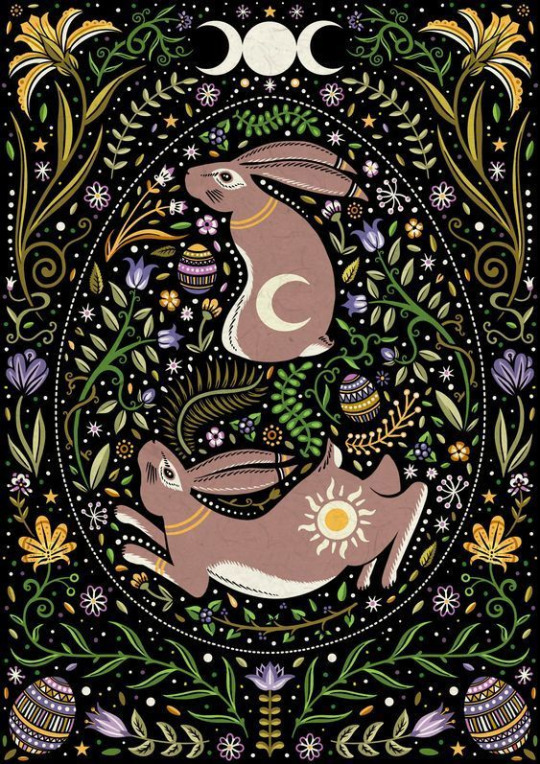
Art Credit: Anastasia Catris
The Spring Equinox, also called the Vernal Equinox or Ostara, is usually celebrated between the 21st of March in the Northern Hemisphere (In the Southern Hemisphere around September 20th or 21st)
In 2024, Ostara and the Spring Equinox land in the Northern Hemisphere on Monday, March 19th.
The Spring Equinox celebrates the arrival of spring. Celebrating balance, growth, and new beginnings as Winter has finally ended.
Spring Equinox Correspondances
Colours
Light Green
Lavender
Sunny Yellow
Light Blue
Pastel Pink
White
Herbal
Lemongrass
Daffodils
Tulips
Violets
Apple Tree
Cherry Blossom
Primrose
Birch tree
Hyacinths
Dandelion
Garlic
Ash tree
Jasmine
Edibles
Honey
Salad greens
Spring veggies
Fresh berries
Mead
Herbs
Eggs
Seeds
Bread
Edible flowers
Quiches
Custards
Maple
Animals
Hares
Baby Chicks
Snakes
Robins
Bees
Butterflies
Phoenix
Ram
Crystals
Fluorite
Moonstone
Silver
Aquamarine
Clear Quartz
Amazonite
Symbols
Bonfires
Flowers
Rabbits
Eggs
Seeds
Baskets
Flowering or Tree Buds
Lambs
Birds
Spiritual meanings
Purification
Cleansing (removal of stagnant energy)
Growth
Transition
Motivation
Balance
Birth
Good fortune
Kindness
Joy
Fertility
Scents
Coconut
Citrus
Floral scents (rose, lilac, jasmine, etc)
Herbal scents (rosemary, basil, mint, etc)
Gods / Goddesses / Spirits
Eostre – (Anglo-Saxon)
Aphrodite - (Greek)
Gaia - (Celtic)
Gaea - (Greek)
Venus - (Roman)
Athena - (Greek)
Aurora - (Roman)
Eos - (Greek)
Isis – (Egyptian)
Freya - (Norse)
Persephone - (greek)
Cybele - (Roman)
The Green Man - (Celtic)
Odin – (Norse)
Osiris – (Egyptian)
Pan – (Greek)
Thoth – (Egyptian)
Adonis – (Greek)
Apollon – (Greek)
Apollo - (Roman)
Need some suggestions to celebrate? I've got you covered.
High energy celebrations and ritual
Deep cleaning of the hearth and home
Nature hikes
Visiting farmers markets
Making preserves
Create a fae garden
Create a seasonal altar
Abundance/Prosperity ritual
New beginnings ritual
Low energy celebrations
Wear pastels
Create flower crowns
Light a candle with scent correspondence
No spoon celebrations
Opening a window
Journaling Prompts
Keeping hydrated
Drink floral tea
Rest
How you celebrate the holiday does not matter. You can choose to do any activity that feels right. These are only suggestions and remember that you're enough no matter what.
Also please note some stuff is UPG. A great book is Year of the Witch by Temperance Alden for honouring the celebrations and if you wanted to work more seasonally. It's not Wiccan-based and has plenty of resources for every witch.
Feel free to post how you celebrate in the comments or reblogs!
Want to see more of my posts? Check out my Wheel of the Year Masterpost or my Main Masterpost.
#witchcraft#witch#electic witch#witchblr#paganism#spoonie witch#spoonie magic#ostara#wheel of the year#witchy#spring equinox#seasonal magic#ostara masterpost#ostara correspondences#spring equinox masterpost#spring equinox correspondances#spoonie#chronic illness magic#chronic illness
1K notes
·
View notes
Text
Carrier Oils & Correspondents
Aglmond Oil-Prosperity, Money, Wisdom
Avocado Oil- Love, Lust, Beauty
Castor Oil-Protection,Absorbing Negativity
Coconut Oil- Purification, Protection
Grapeseed Oil- Fertility, Money, Strengthening Mental Ability's
Jajoba Oil- Healing, Love
Olive Oil- Healing, Peace, Fertility, Protection
Sunflower Oil- Protection, Fertility, Health, Wisdom
#baby witch#witch aesthetic#witch#witch community#witchcore#witchcraft#witches#magick#occult#spellcaster#essential oils#oils#correspondence#witchblr#crystal witch#pagan witch#spellcraft#spellwork#spells#spellbound
369 notes
·
View notes
Text
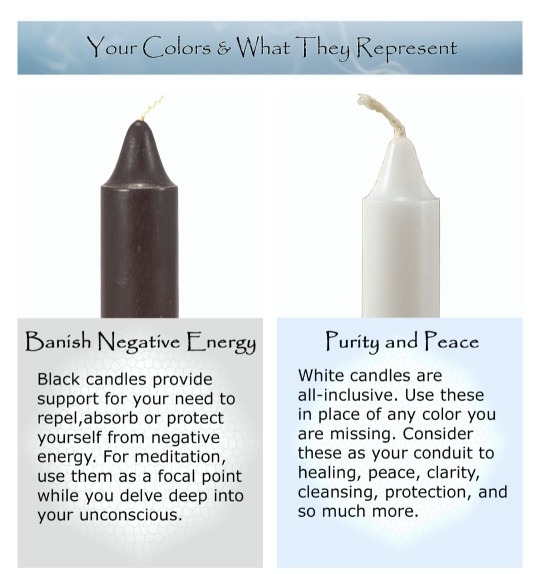
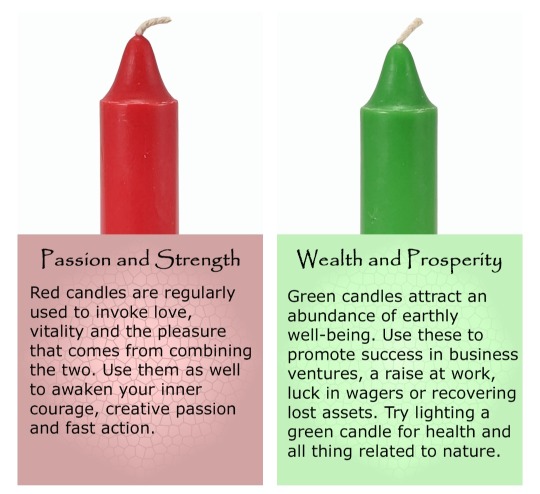
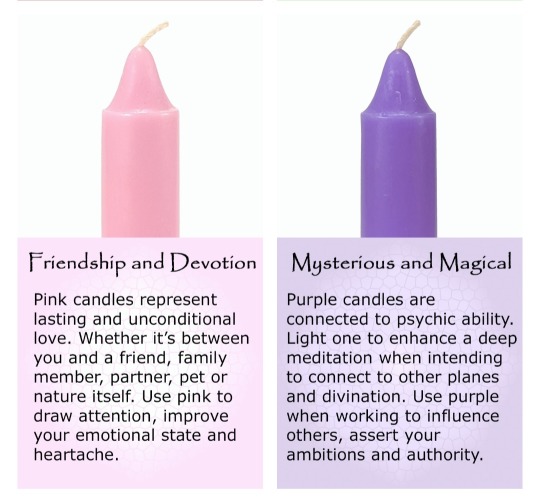

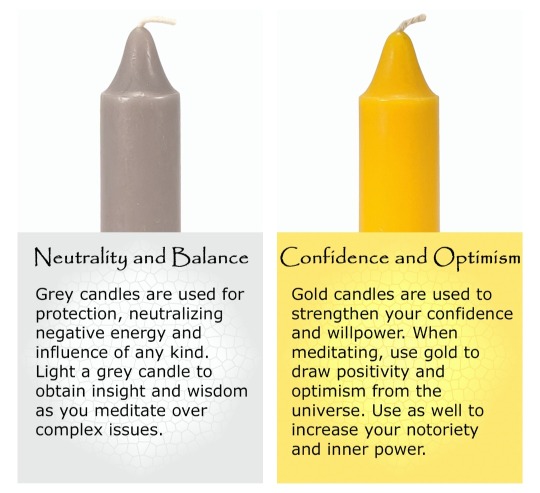

Candle Color Correspondences from Wicca Wicks Storefront - https://www.amazon.com/stores/WiccaWicks/Homepage/page/8C2DBB99-E443-49CF-84A2-A2E359778B07?ref_=cm_sw_r_apann_ast_store_VNGDJVC31BEW62V3H7K5&store_ref=bl_ast_dp_brandLogo_sto
#wicca#witchcraft#candle magick#candle correspondence#candle meaning#candle colors#grimoire#book of shadows#green witch#fire elemental#witchy#witchblr#witches#witchcraft information#baby witch#hedgewitch#herbs#altar#witch blog#witchy blog#eclectic witch#magick#pagan witch#witch community
878 notes
·
View notes
Text
𝖀𝖓𝖉𝖊𝖗𝖘𝖙𝖆𝖓𝖉𝖎𝖓𝖌 & 𝖀𝖘𝖎𝖓𝖌 𝕸𝖆𝖌𝖎𝖈𝖆𝖑 𝕮𝖔𝖗𝖗𝖊𝖘𝖕𝖔𝖓𝖉𝖊𝖓𝖈𝖊𝖘
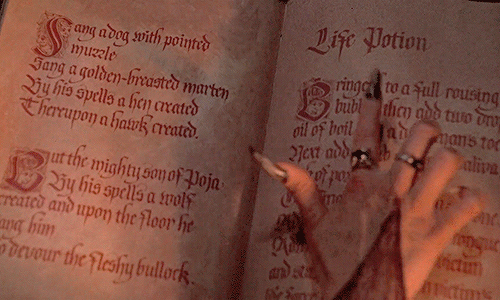
Witchcraft magical correspondences refer to the associations made between various objects, substances, times, and events with specific magical effects or purposes. These correspondences have deep historical roots and derive from a blend of multiple sources, including ancient alchemy, early science, cultural symbolism, religious beliefs, and intentionality.
Ancient Alchemy
Alchemy, the precursor to modern chemistry, played a significant role in shaping magical correspondences. Alchemists sought to understand the mysteries of matter and the transformation of substances, often imbuing their experiments with spiritual and mystical significance. For example, the seven classical planets (Sun, Moon, Mercury, Venus, Mars, Jupiter, and Saturn) were associated with specific metals (gold, silver, mercury, copper, iron, tin, and lead, respectively). These associations were believed to reflect the planets’ influences on earthly matters and human affairs. Alchemical texts also explored the relationships between colors, elements, and spiritual principles, influencing the development of magical correspondences in witchcraft.
Ancient alchemy holds a significant place in the history of science, philosophy, and mystical traditions, influencing various fields and practices, including witchcraft. The importance of ancient alchemy can be understood through its contributions to the development of modern science, its philosophical and spiritual dimensions, and its enduring influence on magical and esoteric traditions.
The Great Work (Magnum Opus): Central to alchemy is the concept of the Great Work, which symbolizes the alchemist’s quest for spiritual and material transformation. This process involves the purification and perfection of substances, often mirroring the alchemist’s inner spiritual journey toward enlightenment and self-realization.
Symbolism and Allegory: Alchemical texts are rich in symbolism and allegory, using metaphors to convey complex philosophical and spiritual concepts. Symbols such as the philosopher’s stone, the ouroboros (a serpent eating its own tail), and the four elements (earth, air, fire, water) encapsulate profound ideas about the nature of reality, transformation, and the interconnectedness of all things.
Hermetic Tradition: Alchemy is closely associated with Hermeticism, a philosophical and spiritual tradition based on the writings attributed to Hermes Trismegistus. Hermetic principles, such as “As above, so below” and the unity of opposites, permeate alchemical thought and emphasize the correspondence between the macrocosm (the universe) and the microcosm (the individual).
Magical Correspondences: Alchemical principles and symbols have been integrated into various magical and esoteric traditions. The associations between planets, metals, and elements in alchemy have become foundational correspondences in many forms of magic and witchcraft.
Transmutation and Transformation: The alchemical goal of transmutation, particularly the transformation of base metals into gold, has a symbolic counterpart in magical practices. This idea of transformation is applied to personal growth, healing, and the manifestation of desires through magical means.
Ritual and Practice: Alchemical rituals, with their focus on purification, transformation, and the attainment of higher states of being, have influenced the structure and content of magical rituals. The use of specific substances, tools, and processes in alchemy has parallels in magical workings, emphasizing the transformation of both the practitioner and the environment.
Alchemy in the Renaissance: During the Renaissance, alchemy experienced a revival as scholars and practitioners sought to integrate ancient wisdom with emerging scientific knowledge. Figures like Paracelsus and John Dee contributed to the development of alchemical thought, blending it with medicine, astrology, and early chemistry.
Psychological Alchemy: In the 20th century, Carl Jung, a prominent psychologist, explored alchemy as a metaphor for psychological processes. Jung’s interpretation of alchemical symbolism as representing the individuation process—the integration of the conscious and unconscious mind—brought new insights into the relevance of alchemy for personal development and psychotherapy.
Contemporary Practice: Today, alchemy continues to inspire both scientific inquiry and spiritual exploration. Modern alchemists, both literal and symbolic, seek to uncover the hidden principles of transformation in nature and the self. The enduring appeal of alchemy lies in its holistic approach, integrating material, psychological, and spiritual dimensions of existence.
Early Science and Natural Philosophy
Early scientific observations and natural philosophy also contributed to the development of magical correspondences. Ancient and medieval scholars often categorized the natural world into elements (earth, air, fire, and water) and humors (blood, phlegm, yellow bile, and black bile), each with specific qualities and effects. These classifications were used to explain natural phenomena and human health, and they found their way into magical practices. For instance, herbs and stones were categorized based on their perceived elemental qualities, and their uses in magic were aligned with these characteristics.
Cultural Symbolism and Mythology
Cultural symbolism and mythology provided another rich source of correspondences. Different cultures imbued animals, plants, colors, and objects with symbolic meanings based on their myths, legends, and folklore. For instance, the oak tree was sacred to many ancient European cultures and associated with strength and protection, while the owl, often seen as a symbol of wisdom in Greek mythology, became associated with knowledge and divination in magical practices. These symbolic associations were passed down through generations and integrated into the magical correspondences of witchcraft.
Religious Beliefs and Practices
Religious beliefs and practices also shaped magical correspondences. Many magical traditions borrowed from the rituals and symbols of dominant religious practices in their regions. In Western Europe, for instance, Christian symbols and saints were often syncretized with older pagan deities and symbols. The use of incense, candles, and specific prayers or chants in magic often mirrors religious rituals, emphasizing the importance of intentionality and spiritual alignment in magical workings.
Intentionality and Personal Experience
The role of intention and personal experience cannot be overlooked in the development of magical correspondences. Practitioners of witchcraft often develop their own associations based on personal experiences, intuition, and the results of their magical workings. This process of individual experimentation and reflection allows for a dynamic and evolving system of correspondences that can vary between different traditions and practitioners. The intention behind the use of a correspondence is believed to be a critical factor in its effectiveness, highlighting the importance of the practitioner’s focus and purpose.
Synthesis and Evolution
Over time, these diverse influences have synthesized into the rich tapestry of magical correspondences used in witchcraft today. Texts such as the “Key of Solomon,” “The Picatrix,” and various grimoires have codified many of these correspondences, while modern practitioners continue to adapt and expand them based on contemporary understanding and practice. The integration of psychological insights, ecological awareness, and cross-cultural exchanges in the modern era further enriches the system of correspondences, making it a living and evolving aspect of witchcraft.
No single person or group decided these correspondences; rather, they evolved organically through the accumulated wisdom and practices of different cultures. Here are some key influences and sources:
Ancient Civilizations
Egyptians: Ancient Egyptian priests and magicians developed extensive knowledge of correspondences. They believed that everything in nature was interconnected and that specific plants, stones, and symbols held particular powers. Their practices were recorded in texts like the Ebers Papyrus and various temple inscriptions.
Greeks and Romans: The Greeks and Romans contributed significantly to the development of correspondences, particularly through the work of philosophers and physicians like Hippocrates, Theophrastus, and Pliny the Elder. Their writings on herbalism, astrology, and natural philosophy helped establish connections between natural elements and their supposed properties.
Celts: The Druids of the Celtic world had a deep understanding of nature and used various plants, trees, and natural phenomena in their spiritual and magical practices. Their knowledge was passed down orally and later recorded by Christian monks.
Medieval and Renaissance Europe
Medieval Herbalists and Alchemists: During the Middle Ages, herbalists and alchemists in Europe studied ancient texts and conducted their own experiments. They documented the properties of plants, minerals, and metals in texts like the “Materia Medica” and various grimoires. Alchemical traditions, which sought to transform base materials into higher forms, also contributed to the understanding of correspondences.
Astrology: Medieval and Renaissance astrologers played a significant role in establishing correspondences, particularly through the association of planets with specific days of the week, metals, and plants. The writings of figures like Ptolemy and later Renaissance magicians like Cornelius Agrippa and Paracelsus were influential in this regard.
Eastern Traditions
Chinese Medicine and Taoism: Traditional Chinese medicine and Taoist practices developed a system of correspondences based on the Five Elements (Wood, Fire, Earth, Metal, Water). These elements were connected to various aspects of life, including organs, emotions, seasons, and directions. The “Huangdi Neijing,” an ancient Chinese medical text, is a key source of this knowledge.
Indian Ayurveda and Hinduism: Ayurvedic medicine and Hindu spiritual practices established correspondences between herbs, gems, times of day, and deities. Texts like the “Atharva Veda” and various Ayurvedic treatises documented these associations.
Modern Influences
Grimoires and Occult Literature: From the Renaissance onward, numerous grimoires (books of magic) compiled and expanded upon earlier correspondences. Notable examples include the “Key of Solomon,” “The Lesser Key of Solomon,” and “The Picatrix.” These texts were influential in shaping modern Western magical practices.
The Golden Dawn and Modern Witchcraft: In the late 19th and early 20th centuries, the Hermetic Order of the Golden Dawn and similar occult organizations synthesized various magical traditions, creating detailed systems of correspondences. Influential figures like Aleister Crowley and Dion Fortune contributed to this synthesis. In the mid-20th century, Gerald Gardner and others who founded modern Wicca drew upon these traditions, further popularizing and systematizing magical correspondences.
Conclusion
Magical correspondences are the result of centuries of observation, experimentation, and synthesis by various cultures and traditions. They were not decided by any single individual or group but evolved over time through the collective wisdom of countless practitioners. Today, they continue to be an essential part of many magical and spiritual practices, providing a framework for understanding and working with the interconnectedness of the natural and spiritual worlds.
#divination#free tarot readings#spirituality#witchblr#tarot#witch#witchcraft#high priestess house#witch community#astrology#eclectic witch#correspondences#witch history#witches of tumblr#occult history#occultism#occult#witchy vibes#witchcore#witch aesthetic#baby witch#witches#witchcraft 101#moon witch#witchy#alchemy#psychology#herbalism#herbalmedicine#alchemist
458 notes
·
View notes
Text
Correspondences for Days of the Week [quick reference]
Sunday
Sun
Gold, white, yellow
Diamond, amber, tiger’s eye, sunstone, topaz, gold
Cedar, frankincense, lemon, St. John’s wort
Success, fame, prosperity, hope, healing, fortune
Monday
Moon
Silver, white, blue
Moonstone, silver, aquamarine, selenite
Jasmine, lemon, sandalwood, honeysuckle, myrtle, willow
Peace, dreams, emotions, illusions, glamours, psychic abilities, insight, wisdom, manifestation
Tuesday
Mars
Red, orange
Bloodstone, ruby, garnet, flint, rhodonite, iron, steel
Basil, patchouli, ginger, black pepper, dragon’s blood
Power, lust, force, passion, will, courage, physical strength, war, energy, action, independence, practicality, protection
Wednesday
Mercury
Yellow, purple, grey
Emerald, agate, fluorite, citrine, aventurine, mica, pumice, quicksilver, zinc
Lavender, eucalyptus, jasmine, sweet pea
Communication, arts, travel, luck, change, chance, gambling, creativity
Thursday
Jupiter
Blue, purple, yellow
Amethyst, lepidolite, sugilite, yellow sapphire, lapis lazuli, tin
Clove, oak, cinnamon, nutmeg, sage
Abundance, gain, riches, prosperity, wealth, success, luck, self-confidence, investment, gatherings, favors, ambition, mercy, humanity, publicity
Friday
Venus
Pink, green, aqua, peach
Jade, lapis lazuli, rose quartz, coral, emerald, malachite, copper
Rose, yarrow, saffron, vanilla, thyme, sandalwood, strawberry
Love, fertility, romance, friendships, passion, creativity
Saturday
Saturn
Black, grey
Jet, obsidian, onyx, lead, pewter, hematite
Cypress, myrrh, patchouli, black poppy seeds
Safety, protection, intellect, life lessons, loss, past lives, law, justice, sincerity, restraint, discipline, responsibility, caution, time, chaos
© 𝟸𝟶𝟸𝟺 𝙰𝙳-𝙲𝙰𝙴𝙻𝙴𝚂𝚃𝙸𝙰
1K notes
·
View notes
Text
Communing with Spirits to Create Personal Correspondences
Buckle up witches, we're doing spirit work!
So over the last ten or so years I've been working on connecting with spirits of the land in order to create my own personal set of correspondences.
Now, I'm not going to just list my personal gnosis about the various flora and fauna of where I live because unless you also live in Gubbi Gubbi Country, it won't be of much use to you. Instead, I'm going to give you the tools to do this for yourself so you can take your witchcraft from a beginner level where you're using common correspondences written in books, to an intermediate level where you're making your own.
Let's do this thing!
So, first you need to step away from the witchcraft books, with their carefully curated lists of correspondences, and step outside. It's important to note that most of the common flora and fauna used in traditional witchcraft originates from Europe. If you live in Europe, this makes it easier for you to make your own correspondences. If you don't... well be prepared to do a bit of hard yakka yourself.
"Using what is local and connecting with one's own land is fundamental." (Horne, 2019)
Step 1: Take a Walk
I know it might seem simple but you're going to walk around your local area. Wear some sensible shoes; fill a water bottle; bring your phone and keys; a plastic bag to put rubbish in; and a small notebook with a pen/pencil. I like to put all of this in a backpack but use whatever works for you.
If this is your first time doing this, you're not going to be making any correspondences. As you walk, reach out with your magic and introduce yourself to the local spirits. It will take time for them to be open to you, so the more often you do this, the better.
Don't pick any flowers or plants on these early journeys. Just take your time and if you see any litter, pick it up. This is a great offering to local spirits and helps pave the way for your connection to the land.
You will soon begin to 'sense' local places where there are stronger / more cognisant spirits. I like to call these 'places of power' and have made a hand drawn map of my local area with little symbols showing where these spirits reside.
Step 2: Learn Your Spirits
Now, learning the 'personality' of these spirits will help you to create correspondences later on down the line. Here are some general guidelines that I've found for my local spirits. Yours may be different.
Because I live in a colonised country, many local spirits don't like colonisers and will be actively hostile towards people who are not indigenous. For example, during the 1700s and 1800s there were massacres of the local Gubbi Gubbi people on this land by colonisers. The spirits of the land remember the blood of their cousins spilt by outsiders. In the 'lifespan' of older spirits like rivers, islands and mountains, these atrocities didn't happen that long ago... so you can understand why they wouldn't like non-indigenous people.
Water Spirits
Rivers tend to have strong spirits associated with them. They are slow moving, often nourishing, revitalising and cleansing. They're also OLD, like thousands of years old. The age of the river usually dictates the wisdom of the spirit. But you also need to do research into the history of the river, what plants and animals call it home and how it's been treated by humans as this often dictates how hostile the spirit will be with you when interacting with it. Most of the time river spirits will ignore you. Don't be discouraged, but understand that you are just one of the millions of entities living on their banks. Be respectful and persistent. It takes time.
Creeks and Streams are much younger than rivers most of the time and their speed reflects this. They often have more energising, almost playful spirits but this is not always the case. For example, there is a creek in Gubbi Gubbi Country called Murdering Creek... It's called that because in 1862, approximately 25 Gubbi Gubbi men were simply fishing in canoes during bunya season only to be ambushed and massacred by the Manager of the Yandina Station, Walter Taplock Chippindall, and five other stockmen (Gibbons, 2014). The spirit of this creek understandably does not like white people and did not want to work with me. That is totally fine and I respected its wishes. Just like people, not all spirits are going to like you. That's okay.
Lakes are often more calm spirits. They nourish the land around them and are often more reflective and quiet. You often have to really listen closely to connect with the spirit of a lake. Do not expect a quick response from a lake... let them ruminate for a while and come back later.
Swamps are simultaneously teeming with both life and death; with fallen trees, rotting logs, buzzing mosquitoes and all manner of wildlife. Spirits of swamps are slow and stagnant like the water that inhabits them. Not much phases them most of the time as they are used to the quickly turning wheel of life and death that lives in or around the swamp. They don’t really care about you most of the time… almost like an indifference that tastes like death and rebirth.
Freshwater springs are usually lively spirits bursting with energy bringing forth life-giving, generous refreshment from beneath the surface of the earth. They are cool and bright with an almost ‘mineral’ taste. There aren’t really many freshwater springs where I am that don’t have bottled water companies taking the water so admittedly, my connection with these types of spirits is limited.
The Ocean… Stand in awe at the majesty of these spirits. They are both life-giving and devastating. I love the ocean and feel safe when in its waters, but I also know it doesn’t give a shit about me. It is vast, ancient and tumultuous. There is deep, deep wisdom here… be respectful and you’ll be fine.
Earth Spirits
Mountains here are often proud and headstrong. The spirits of the Mountains on Gubbi Gubbi Country often have stories associated with them. The most famous are the volcanic plugs known nowadays as the Glasshouse Mountains. They’re a family: Tibrogargan, the father, and Beerwah, the mother, had many children. One day, Tibrogargan was gazing out to sea and noticed a great rising of the waters. He ran to his children and told them to flee inland. He told his eldest son, Coonowrin, to help his mother Beerwah, who was with child. But Coonowrin fled, leaving his mother behind. Enraged, Tibrogargan pursued Coonowrin and hit him in the neck with his club, leaving it crooked and bent. When the floods had subsided the family returned to the plains. Feeling ashamed, Coonowrin begged Tibrogargan for forgiveness, but filled with shame at his son’s cowardice, Tibrogargan could do nothing but weep copious tears, which, trickling along the ground, formed a stream that flowed into the sea. Then Coonowrin went to his brothers and sisters, but they also wept at the shame of their brother’s cowardice. The lamentations of Coonowrin’s parents and of his brothers and sisters at his disgrace explain the presence of the numerous small streams of the area. Tibrogargan then called to Coonowrin, asking him why he had deserted his mother. Coonowrin replied that as Beerwah was the biggest of them all she should be able to take care of herself. He did not know that she was pregnant again, Then Tibrogargan turned his back on his son and vowed that he would never look at him again. Even today Tibrogargan gazes far out to sea and never looks around at Coonowrin, who hangs his head and cries, his tears running off to the sea. His mother Beerwah is still heavy with child, as it takes a long, long time to give birth to a mountain.
Trees here in Australia have all sorts of different spirits and personalities. For example, most paperbark trees feel revitalising, like a snake shedding its skin, they are often spirits of renewal and change. They are also protective and healing as paperbark was used to make waterproof shelters,bedding, bandages, rafts, containers and more. The leaves were also used to add flavour to cooking, and a traditional ground oven will often include layers of paperbark leaves. Tea Tree spirits are also cleansing and healing. They often live beside lakes or swamps that are traditionally called “healing lakes���. The tannins of these trees leach into the water making the water change to a tea color while infusing the water with antibacterial and medicinal qualities. Eucalyptus or Gum tree spirits are often cleansing and protective as the leaves have traditionally been used in smoking ceremonies for millenia and their wood for shields. These spirits are also closely associated with fire as the leaves and bark don't decompose and are filled with a highly flammable oil. Eucalypts are therefore destructive, protective and even regenerative as our landscape needs fire to survive with many native plants requiring heat and smoke to crack open seed pods and help them germinate in the new carbon-rich soil.
Step 3: Write your Correspondences
I’m not going to go into detail here as Bree @breelandwalker has an excellent post all about Creating Correspondences which I will direct you to look at.
So yeah ~ hope this was helpful!
~ Marci
References
Gibbons, R, 2014, ‘Deconstructing the Myth of Murdering Creek’.
Horne, R 2019, 'Folk Witchcraft: A Guide to Lore, Land, & the Familiar Spirit for the Solitary Practitioner'
#witch#witchcraft#correspondences#stormbornwitch#spirit work#australian witch#australian witchcraft#marci talks about stuff#grimoire#breelandwalker#intermediate witchcraft#folklore#folktales#indigenous wisdom
251 notes
·
View notes
Text
Planetary Days And Hours
Magick is at its best when performed during certain days and hours of the day. These time periods are associated with the seven celestial bodies in our solar system that we can observe with the naked eye. The associations are as follows:

A magical day is measured starting at sunrise and ending at sunset. Each sunrise and sunset period is divided into twelve equal parts, resulting in a (roughly) 24-hour day. Depending on your location relative to the equator, the planetary hours you calculate in your area may be longer or shorter than conventional hours.
The first hour of the day is always that of the planet the day represents. The hours then repeat infinitely in the following order: Saturn, Jupiter, Mars, Sun, Venus, Mercury, Moon.


* Power hours; ** Witching hours
The first, eighth, fifteen and twenty second hours are called power hours. These are the hours in which the seven-planet cycle repeats. Notice that the cycle resets after the twenty fourth hour with the power hour of the subsequent day.
The two hours after the final power hour and the twenty third and twenty fourth hours are called the witching hours. (Conventional hours place the witching hours between midnight and 3am, or 3am to 6am) These hours are favored by black magicians for casting baneful magick.
Use these tables to reference ideal days and hours when scheduling your spells. The finer you tune the time of the ritual, the more potent your magick will be.

#magick#witch#dark#witchcraft#Planetary#magical correspondences#correspondence#eclectic witch#eclectic#eclectic pagan#pagan community#witch community#chaos witch#witchblr#spell work#spellwork#spellcasting#spells#spell
343 notes
·
View notes
Text
𝐈𝐦𝐛𝐨𝐥𝐜
⠂⠄⠄⠂⠁⠁⠂⠄⠄⠂⠁⠁⠂⠄⠄⠂⠄⠄⠂⠂⠄⠄⠂⠁⠁⠂⠄⠄⠂⠁⠁


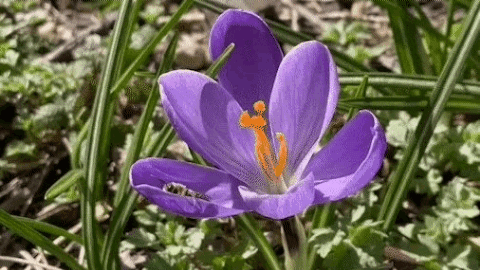

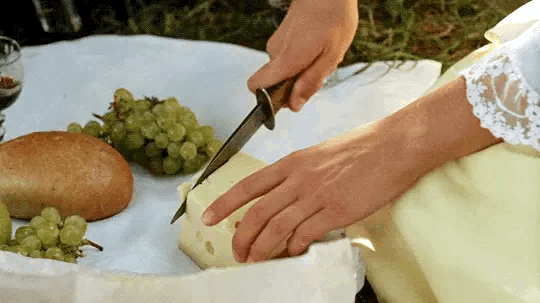

⠂⠄⠄⠂⠁⠁⠂⠄⠄⠂⠁⠁⠂⠄⠄⠂⠄⠄⠂⠂⠄⠄⠂⠁⠁⠂⠄⠄⠂⠁⠁
What is Imbolc?
Imbolc is a festival that marks the midpoint between the Winter Solstice and the Spring Equinox, occurring around February 1-2. Known as Brigid’s Day or Candlemas, it celebrates the first stirrings of spring and the return of light. The name Imbolc translates to “in the belly,” symbolizing new life, growth, and the creative potential that is awakening within the earth. It is a time of purification and renewal, where the energy of the earth begins to rise, bringing warmth and vitality to the whole world.
Imbolc is often dedicated to Brigid, the goddess of fire, healing, poetry, and craftsmanship. Brigid is associated with both the hearth and the forge, embodying the transformative powers of fire and light. As the days grow longer and the sun strengthens, we honor her influence in bringing fertility and growth to the land. The first signs of spring, such as the lactation of ewes and the appearance of snowdrops, are seen as blessings from Brigid, signaling that life is returning.
Imbolc is also a festival of light, a time to celebrate the increasing daylight through the lighting of candles, bonfires, and lanterns. As the earth begins to thaw and the seeds of spring stir beneath the soil, Imbolc offers a space for spiritual growth and creative awakening. It is a perfect time to clear away the stagnant energies of winter, refresh the soul, and prepare for the vibrant months to come. The act of lighting candles not only honors the growing light but also serves as a reminder of the inner light within us all, waiting to shine brightly in the coming seasons.
⠂⠄⠄⠂⠁⠁⠂⠄⠄⠂⠁⠁⠂⠄⠄⠂⠄⠄⠂⠂⠄⠄⠂⠁⠁⠂⠄⠄⠂
Goddess Brigid
Brigid, one of the most revered deities in the Celtic pantheon, is also known as Lady of the Sacred Flame. She is the goddess of healing, fire, smithcraft, creativity, animals, hearth and poetry, Imbolc is her Sabbat, a time dedicated to honoring her influence on creativity and new beginnings. Her symbols are fire, poetry, lambs and fertility. Brigid is often depicted with a flame emerging from her head or a serpent coiled around her, representing the powerful energy she brings. She is also a goddess of protection, childbirth, women, blacksmithing and life.
⠂⠄⠄⠂⠁⠁⠂⠄⠄⠂⠁⠁⠂⠄⠄⠂⠄⠄⠂⠂⠄⠄⠂⠁⠁⠂⠄⠄⠂
The Return of Light and the First Signs of Spring
Imbolc marks the shift from winter to the first signs of spring. Days start to get longer, and you can feel the earth beginning to wake up, even though winter isn’t completely gone. It’s the time when the sun starts to grow stronger, and we begin to see early signs of new life. During Imbolc, many light candles or bonfires in Brigid's honor, celebrating the return of light and the growing strength of the sun as the days grow longer.
⠂⠄⠄⠂⠁⠁⠂⠄⠄⠂⠁⠁⠂⠄⠄⠂⠄⠄⠂⠂⠄⠄⠂⠁⠁⠂⠄⠄⠂
Brigid's Cross
A traditional symbol of Imbolc, Brigid’s Cross is woven from reeds or straw and represents both protection and blessings. It’s believed to offer protection from fire and lightning, making it an essential symbol of Brigid’s influence. In Ireland, it was common to hang Brigid’s Cross on the rafters of homes to invoke her protective energy.
⠂⠄⠄⠂⠁⠁⠂⠄⠄⠂⠁⠁⠂⠄⠄⠂⠄⠄⠂⠂⠄⠄⠂⠁⠁⠂⠄⠄⠂
Brigid's Flame
According to legend, Brigid lit a flame on the hill of Kildare, pledging to keep it burning in her honor. This flame was said to burn continuously, symbolizing her eternal presence and influence over the cycles of life. The fire became a sacred symbol, tended by the Brigidine Sisters for centuries, representing not just physical warmth, but the power of creativity and healing.
⠂⠄⠄⠂⠁⠁⠂⠄⠄⠂⠁⠁⠂⠄⠄⠂⠄⠄⠂⠂⠄⠄⠂⠁⠁⠂⠄⠄⠂
Magic Correspondences
Planets: Sun, Moon, Venus
Season: Midpoint between Winter and Spring
Element: Earth, Fire
Time of Day: Dawn
Tarot: The Star, The Empress, The Ace of Wands
Colors: White, Light Yellow, Green, Gold, Silver, Lilac, Pale Pink, Purple
Herbs: Chamomile, Clover, Angelica, Heather, Basil, Bay Laurel, Willow, Rosemary, Milk Thistle, Coltsfut, Lavender,
Fruits: Orange, Lemon, Pomegranate, Apple, Pear, Blackberry (Brigid's favorite fruit)
Vegetables: Leek, Potato, Carrot, Turnips, Garlic
Runes: Sowilo, Berkano, Algiz, Kenaz
Crystals: Carnelian, Amethyst, Garnet, Onyx, Ruby, Citrine, Clear Quartz, Milk Quartz
Trees: Rowan, Willow, Birch
Goddesses: Brigid, Demeter, Hestia, Vesta, Aphrodite, Ceres, Venus, Arianrhod, Cerridwen, Gaia, Aradia, Athena, Minerva
Gods: Faunus, Eros, Pan, Cupid, Aenghus Og
Dragon: Fafnir
Flowers: Snowdrops, Crocus, Daisy, Dandelion, Chicory
Animals: Lamb, Sheep, Cow, Deer, Groundhog, Hedgehog, Snake, Swan, Wolf, Bear, Boar
Magical Powers: Purification, Renewal, Creativity, Fertility, Awakening, New Beginnings, Hearth and Home, Healing, Hope, Inspiration, Cleansing, Protection
⠂⠄⠄⠂⠁⠁⠂⠄⠄⠂⠁⠁⠂⠄⠄⠂⠄⠄⠂⠂⠄⠄⠂⠁⠁⠂⠄⠄⠂
Activities To Do:
🐑 Light candles or a bonfire to honor the return of the sun.
🐑 Make an Imbolc altar.
🐑 Rest and enjoy the midwinter season doing cozy activities.
🐑 Wear the colors of the season.
🐑 Cook or bake seasonal dishes, especially fresh bread, cheese, or other dairy products.
🐑 Make Brigid's cross.
🐑 Take a walk in nature and collect branches and stones to add to your altar.
🐑 Donate to animal shelters or send wishes for the animals born during this season, especially lambs.
🐑 Eat fresh bread or drink milk
🐑 Clean your house to invite new positive energy.
🐑 CREATE ANYTHING!! whether it’s art, crafts, edits or poetry.
🐑 Write the sigil of Imbolc somewhere visible to attract its energy( I usually do this on a piece of paper that I put on my altar or on my arm)
🐑 Take a bath with lavender or cinnamon essential oil
🐑 Read about the goddess Brigid
🐑 If it’s a sunny day, celebrate the festival of light by spending time outdoors and letting the sun purify you.
🐑 Do offerings for your deities
🐑 Dance to festive music, feel the joy of the season, and let your inner fire shine :D
🐑 Try spinning or crafting with wool to honor traditional Imbolc crafts.
🐑 Look for seasonal flowers like snowdrops or crocus and bring some into your home for decoration.
🐑 Plant seeds if the weather allows, symbolizing new beginnings and growth.
🐑 Do spells for fresh starts and set intentions
🐑 Worship Goddess Brigid or any deities you feel connected to during this time.
🐑 Read poetry to celebrate the creative energy of the season.
🐑 Make an Imbolc Magick Spell Jar
⠂⠄⠄⠂⠁⠁⠂⠄⠄⠂⠁⠁⠂⠄⠄⠂⠄⠄⠂⠂⠄⠄⠂⠁⠁⠂⠄⠄⠂
Food and Drinks:
Dairy products (or vegetarian alternatives), like milk, cheese, and yogurt, freshly baked bread, muffins, waffles, blackberry jam, blackberry cakes (anything with blackberries), lemon cake, poppy seed cakes, biscuits coated in sesame seeds, dishes with bold spices, seeds such as sunflower, poppy, and sesame (for Imbolc seeds are very meaningdul), red cabbage, oats, butter, honey, garlic, scones, pancakes, crepes, pickles, cheese pie, oatcakes, bannock, mashed potatoes, colcannon, chili peppers, eggs, apple tarts, spiced nuts, roasted vegetables, hearty soups, grain-based salads, and citrus fruits, such as orange, lemon or pomelo). Don’t forget to make a wish while flipping your pancakes on Imbolc! <3
⠂⠄⠄⠂⠁⠁⠂⠄⠄⠂⠁⠁⠂⠄⠄⠂⠄⠄⠂⠂⠄⠄⠂⠁⠁⠂⠄⠄⠂
useful sources: Wicca: A Modern Guide To Witchcraft & Magick; Encyclopedia of Witchcraft: The Complete A-Z for the Entire Magical World by Judika Illes
gifs credit: Pinterest
Tip Jar🌲
#imbolc#candlemas#magic#magick#winter#deity work#paganism#deity worship#witch#february#winter magic#sabbath#witchy#wicca#witches#goddess brigid#witchcraft#pagan witch#witch community#witchcore#witchblr#hellenic community#hellenic#hellenic polytheism#hellenic paganism#hellenism#hellenic polytheist#magic correspondences#hellenic pagan#greek mythology
898 notes
·
View notes
Text
Witchy holiday correspondence tip
Historically, foods, decorations, and so on depended on what was available around certain holidays. If you got something like dried peppers because you grew 'em, you can put those on your Samhain altar if you want! If you want to grind your dry peppers and use them in your Yule foods, go for it!
224 notes
·
View notes
Text
Days of the Week [Witchcraft Correspondences]

Sunday: (the Sun) success, power, swift change, God ritual
Monday: (the Moon) psychic work, Goddess ritual, Faerie magick
Tuesday: (Mars) protection, victory, courage, athletics
Wednesday: (Mercury) communications, intellectual pursuits, flexibility
Thursday: (Jupiter) business, group pursuits, joy, laughter, expansion
Friday: (Venus) love, friendship, nature, beauty, arts and crafts
Saturday: (Saturn) crystallization, hidden or obscured matters, limitations and boundaries
by @chickenroost
178 notes
·
View notes